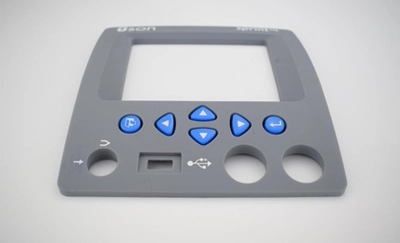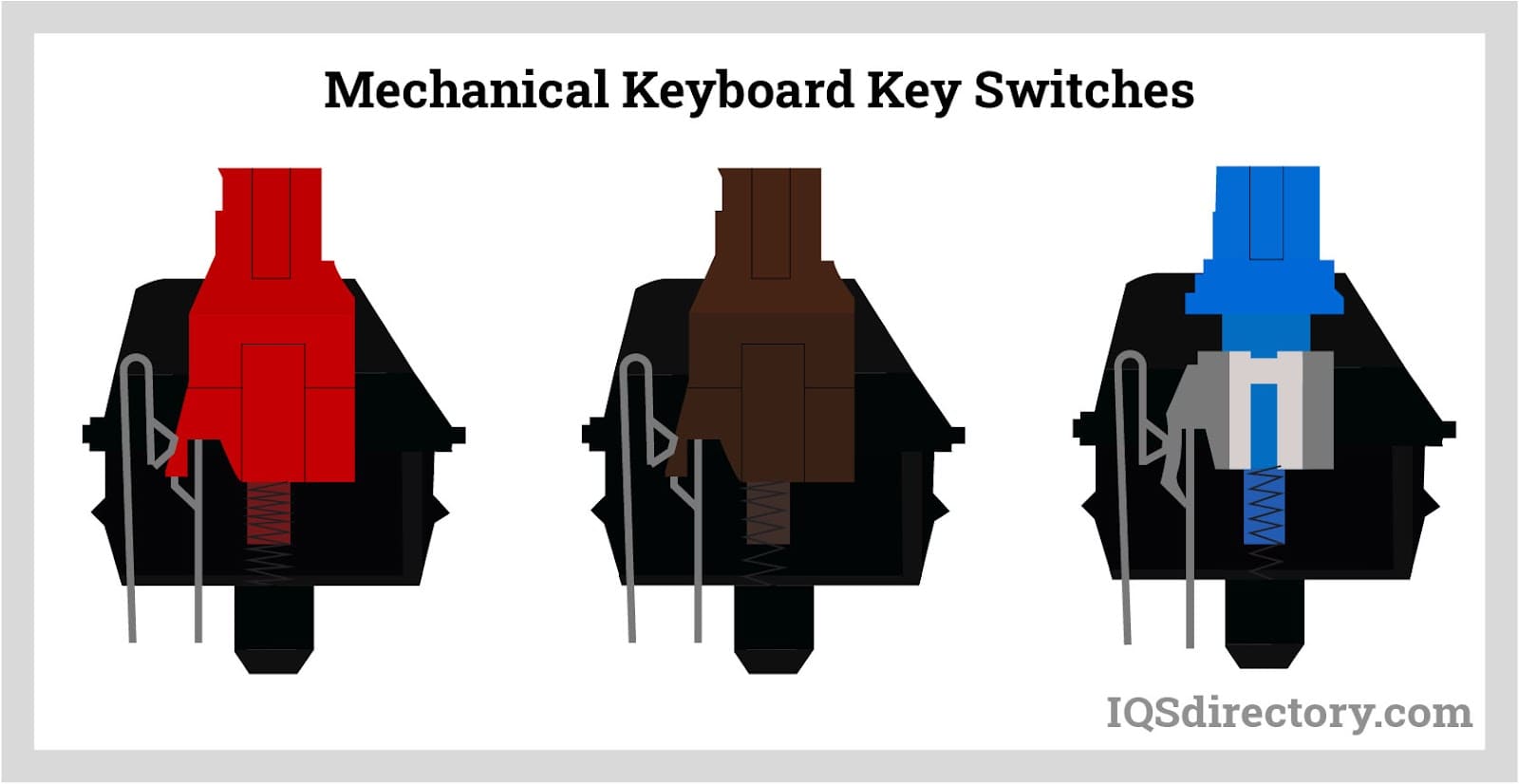Developing intuitive user interfaces with membrane switch
The Production Process Behind Membrane Layer Switch: What You Required to Know
The manufacturing procedure behind membrane switches over combines cautious layout, material option, and high quality control. It starts with comprehending the intricacies of membrane layer switch style and proceeds with numerous stages, consisting of material options and printing techniques. Each stage plays a necessary role in making sure functionality and sturdiness. However, the intricacies of layer building and construction and the extensive screening standards may disclose insights that are not right away apparent. What lies beyond these foundational components?
Understanding Membrane Layer Switch Design
Membrane layer buttons may appear basic at initial look, their design involves elaborate considerations that ensure performance and longevity. The design procedure starts with an extensive understanding of individual demands, consisting of the interface's designated application and environmental aspects. Functional designs is a vital component, as the format has to promote convenience of use while guaranteeing that tactile feedback meets customer expectations.Moreover, the layering of parts, such as visuals overlays, sticky layers, and conductive traces, need to be exactly engineered. membrane switch. This layered arrangement not just affects the switch's responsiveness but additionally influences its durability. Interest is offered to the sealing strategies utilized to safeguard against dampness and dirt, which might compromise efficiency. Furthermore, design considerations encompass looks, where color design and aesthetic clearness enhance customer experience. Eventually, the design of membrane layer changes balances capability, individual experience, and resilience, making certain that they satisfy the demands of numerous applications efficiently
Products Utilized in Membrane Change Manufacturing
When picking materials for membrane layer switch production, it is vital to contemplate both efficiency and durability. The key materials consist of polyester and polycarbonate films, which supply flexibility and stamina. These movies are typically covered with sticky to assure proper bonding to substratums. Conductive inks, generally made up of silver or carbon, are crucial for producing electric connections within the button, enabling reputable operation.Additionally, a safety layer, such as a hard layer, is regularly put on improve scrape resistance and longevity. The option of backing product, such as acrylic or foam, can considerably affect the button's tactile feel and general customer experience. Numerous ecological factors, including temperature and humidity, must lead product option to guarantee peak performance in particular applications. Eventually, the ideal mix of products adds to the membrane layer button's functionality and lifespan, making informed choices vital for makers.
The Printing Refine: Creating Video and Text
The printing process in membrane switch manufacturing plays a significant role in producing premium graphics and text. Various graphic design techniques are employed to assure aesthetic allure and capability, while cautious ink choice techniques are vital for sturdiness and performance. Understanding these elements is fundamental for attaining ideal outcomes in membrane switch layout.
Graphic Style Techniques
Graphic design strategies play a necessary function in the printing process of membrane layer switches, as they specify exactly how graphics and text will inevitably appear on the end product. Reliable visuals design entails the tactical usage of layouts, typefaces, and colors to improve readability and visual allure. Designers commonly utilize vector graphics for scalability, making certain that images continue to be sharp at various dimensions. In addition, interest to comparison and alignment is crucial, as it affects individual communication and aesthetic high quality. The unification of branding elements, such as logos, have to be handled with like keep brand name integrity. In general, thoughtful visuals design methods add substantially to the functionality and appearance of membrane layer switches, affecting individual experience and item performance.
Ink Option Techniques
Choosing the ideal ink is vital for accomplishing the wanted aesthetic quality and toughness in membrane layer button production. Different ink kinds are used, consisting of solvent-based, water-based, and UV-curable inks. Each kind offers distinct qualities, such as resistance, adhesion, and flexibility to environmental factors. Solvent-based inks are typically favored for their toughness and lively shades, while water-based inks are a lot more environmentally pleasant yet might have restrictions in bond. UV-curable inks supply fast treating and robust performance. Additionally, shade matching strategies ensure that the chosen inks line up with design specifications. Ultimately, the selection of ink have to take into consideration aspects such as application technique, substrate compatibility, and end-use requirements to achieve superior lead to membrane layer switch graphics and text.
Layer Construction and Setting Up

Product Selection Process
A careful choice of products is essential in the manufacturing process of membrane switches, as it directly influences performance and toughness. The key products used include polyester, polycarbonate, and various conductive inks. Polyester is frequently favored for its exceptional resistance to chemicals and abrasion, making it ideal for rough environments. Polycarbonate, on the various other hand, provides exceptional clearness and influence resistance, which is valuable for applications calling for presence and robustness. Conductive inks, generally composed of silver or carbon, are vital for creating dependable electrical pathways. In addition, the choice of glue materials affects the general stability of the switch - membrane switch. Examining aspects such as ecological exposure, tactile comments, and aesthetic demands overviews suppliers in picking the very best products for their certain applications
Layer Bond Methods
Sticking layers in membrane layer button construction is an important process that guarantees functionality and longevity. Different bond methods are utilized to secure perfect bonding between layers, which normally include using adhesives, warmth, and stress. Pressure-sensitive adhesives (PSAs) are typically utilized for their ease of application and prompt bonding capabilities. Furthermore, thermal bonding techniques can be used, where warm is used to trigger glue homes, protecting a strong bond. The selection of bond method greatly depends upon the products involved and the certain application requirements of the membrane button. Proper positioning and consistent application of adhesives are necessary the original source to prevent defects, protecting the button operates successfully throughout its desired lifespan.
Quality Assurance Measures
Guaranteeing high quality control throughout the layer construction and assembly of membrane layer buttons is important for preserving efficiency and integrity. This process generally includes numerous critical steps, consisting of thorough evaluations at each stage of manufacturing. Suppliers make use of advanced testing methods, such as peel tests and adhesion evaluations, to confirm the stability of layer bonds. In addition, aesthetic examinations are conducted to identify any defects in printing or material disparities. Environmental conditions, such as temperature and humidity, are carefully monitored to guarantee perfect curing and adhesion. Furthermore, regular calibration of equipment helps keep specific production requirements. By carrying out these high quality control steps, producers can significantly reduce the threat of item failure, guaranteeing that the last membrane layer changes meet the called for requirements and client expectations.
Examining and Quality Assurance Procedures

Innovations in Membrane Layer Change Technology
As advancements in technology remain to advance, membrane layer switches are taking advantage of ingenious developments that boost their performance and user experience. One significant development is the integration of capacitive touch innovation, which enables even more user-friendly and receptive individual interfaces. This change not only boosts looks but likewise reduces mechanical damage, extending the life-span of the switches.Additionally, developments in visuals overlay materials have caused improved toughness and resistance to environmental aspects such as dampness and UV light. These materials currently supply enhanced clearness and illumination, further raising the aesthetic appeal.Furthermore, the incorporation of wise modern technology is transforming membrane switches over right into interactive control panels, allowing connection with IoT devices. This connectivity promotes a smooth customer experience, leading the way for applications in different sectors, from healthcare to customer electronics. Collectively, these advancements placement membrane layer switches as vital parts in modern-day device design.
Frequently Asked Concerns
Exactly how Lengthy Does the Membrane Layer Switch Over Production Refine Take?
The period of the membrane switch manufacturing process can vary significantly. Aspects such as intricacy, products made use of, and manufacturing quantity impact timelines, with regular manufacturing varying from a couple of days to numerous weeks for conclusion.
What Are the Usual Applications for Membrane Layer Buttons?
Membrane layer buttons are frequently made use of in different markets, consisting of vehicle controls, family home appliances, medical gadgets, and consumer electronics (membrane switch). Their versatility and durability make them perfect for applications requiring user-friendly interfaces and reliable efficiency in varied settings
Can Membrane Layer Changes Be Customized for Specific Needs?

What Is the Lifespan of a Common Membrane Change?
The life-span of a typical membrane switch varies, my explanation however normally, it ranges from 1 to 5 million cycles. Factors such as use, atmosphere, and worldly top quality substantially influence durability and total efficiency in time.

Are Membrane Switches Ecologically Friendly?
The environmental kindness of membrane layer switches over varies. Some materials made use of may not be recyclable, while others can be environment-friendly. The total influence depends on manufacturing methods and products, necessitating careful consideration during selection and disposal. The production process behind membrane switches combines cautious design, material choice, and quality control. It begins with comprehending the complexities of membrane switch design and progresses with numerous phases, including product options and printing techniques. When picking products for membrane layer switch production, it is vital to consider both efficiency and longevity. A cautious selection of products is crucial in the production process of membrane switches, as it straight affects performance and toughness. The choice of attachment approach greatly depends on the materials entailed and the particular application needs of the membrane switch.